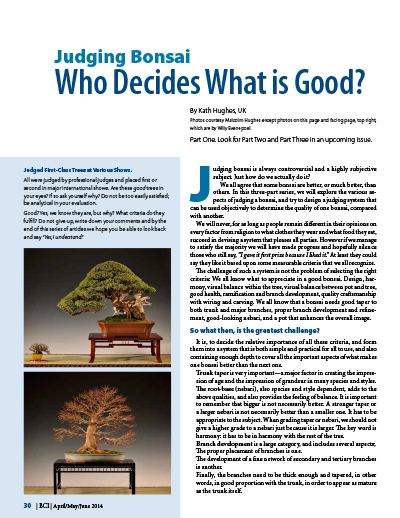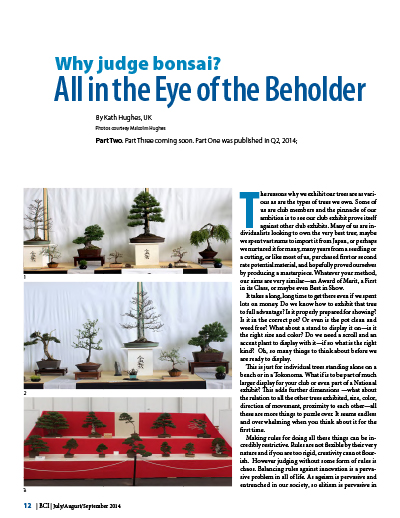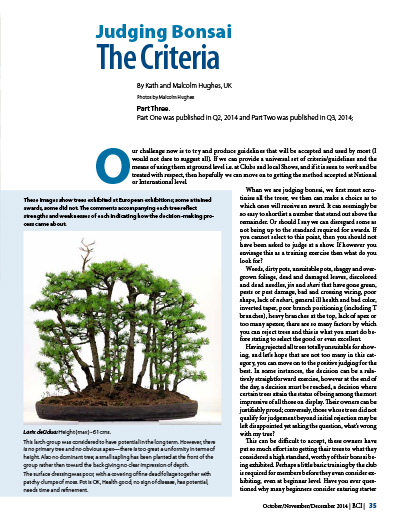Bonsai and Penjing Styles
by Gudrun Benz, drawings by Willi Benz
5 basic stylesFormal upright style: Chokkan, Tachi-gi |
Other bonsai and penjing stylesBroom style: Hoki-Zukuri |
Bonsai and Penjing styles; A short introduction
Guidelines for shaping
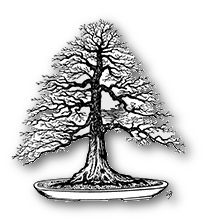
Formal upright style (Chokkan)
Vertical straight trunk evenly tapering from base to apex, its structure should be visible.
Visible surface roots spreading out in all directions but not directly to the front
The arrangement of the branches from the lowest to the highest should become shorter and more “delicate”.
The main branch should go to one side and should be the longest and strongest, the second branch should go to the other side.
Shorter back branches
The whole of the branches from the lowest layer to the apex should form an irregular triangle.
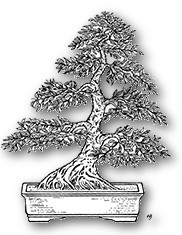
Informal upright style (Moyogi)
Basically upright direction of the trunk with some curves or angles, fairly even taper from the base to the apex. The tip should lean slightly toward the viewer.
Surface roots and distribution of branches nearly the same as for formal upright style.
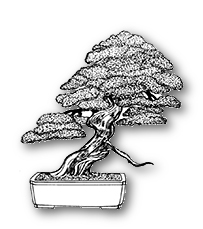
Slanting style (Shakan)
Leaning trunk, mainly straight
The slant should go to the right or to the left at an angle of 55° to 70°.
To convey the feeling of balance and stability there should be a root system in direction of the slant of the trunk but mainly to the opposite side.
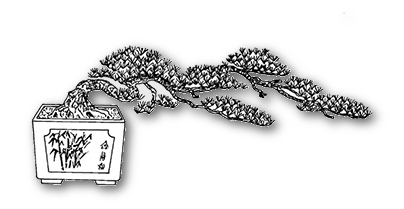
Semi-cascade style (Han-kengai)
Basically horizontal trunk at an angle between 0° to 30° or a little bit above or below (until the rim or maximum the bottom of the pot).
Strong surface roots and a sturdy trunk give a feeling of stability.
Should convey the impression of hanging over a ravine or a cliff.
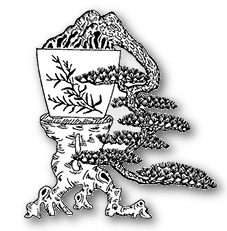
Cascade style (Kengai)
Trunk between an angle 0° and -90° (below the horizontal)
The trunk should rise from the pot for a short distance, going down at a sharp angle and then meandering down. The part of the trunk over the pot can form a “head” by compact layers of foliage, which should not hide the trunk curve.
Layers of foliage should be outside of the curves (bends) of the tail of the cascade.
The tip of the tail should be directed toward the observer.
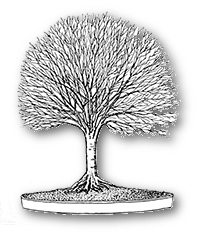
Broom style (Hokidachi)
Straight trunk similar to the formal upright style
Branches eminate from the top of the trunk somewhat like an upturned broom.
Branches fork into fine ramification, spreading evenly to all sides.
Most suitable for deciduous specimens like Chinese elm, Zelkova, Trident maple…
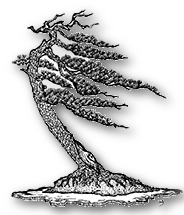
Windswept style (Fukinagashi)
It is regarded as a variation of slanting style reflecting the strong influence of a frequently blowing wind from one side, and therefore with mostly one-sided growth of branches
Nevertheless other bonsai styles such as formal and informal upright and semi-cascade can show typical features of wind swept style.
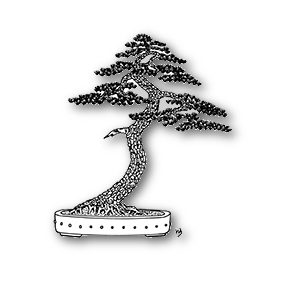
Literati style (Bunjin)
Style derived from traditional Chinese scroll paintings of the literati.
Branches begin only at the top of a relatively high, straight or mostly gently curved trunk. A half or three quarters of the trunk is bare. Branches form a small crone with sparse foliage. They are crossing sometimes the trunk or other branches what is never seen at other styles
Round, hexagonal or octagonal pots are preferred.
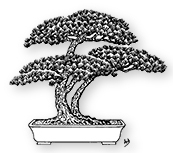
Twin-trunk style
Two trunks emerge from the same root system. The division between the two trunks should be close to the base. Their thickness and high should be different. The shape of both trunks should have the same general line. Because one of them is smaller this style is often called “Father and Son” or “Mother and son” or “Mother and Daughter” style.
The shaping of the branches is similar to a single tree.
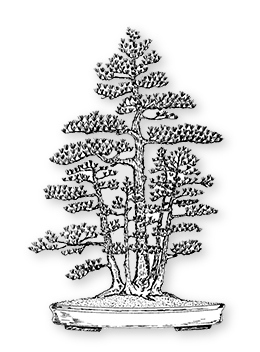
Multi-trunk style (Clump style)
An irregular number of trunks emerge from the same root system. The division of the trunks should be close to the base. The thickest and tallest trunk is the main tree, the others should be lower and thinner and so designed that the overall outline is triangular or dome-like.
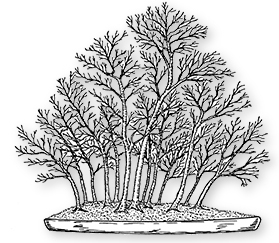
Forest planting (Group planting) (Yose-ue)
An odd number of trees of the same specie is planted together in a container. The general shape of the trees should be similar in order to create a harmonious arrangement. The main tree is placed off-centre in the container according to the rules of the golden section. Smaller complementary trees are placed on either side. Smaller trees are place in the back in order to create depth.
Raft style (Ikadabuki)
It simulates a fallen trunk blown down by wind. Three or more odd number of trunks (former branches) rises from a single horizontally lying straight trunk.
It is possible to create “artificially” a raft style by laying a single trunk down on its side and induce the formation of roots on the underside and train branches of the upper side into new trunks.
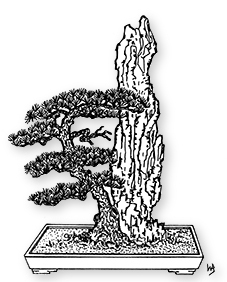
Root-over-rock style (Sekijoju)
A single tree is planted on a rock with the exposed roots which are going down by clinging tightly to the rock before going into the soil. The exposed (visible) roots form quasi a part of the trunk.
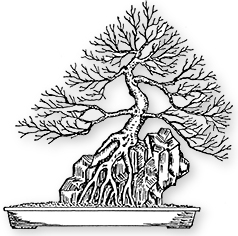
Exposed root style (Neagari)
The style suggests a tree which roots are washed out from the soil by water. Most of the upper root system is exposed to the air giving the impression of stilts.
Bonsai Appreciation
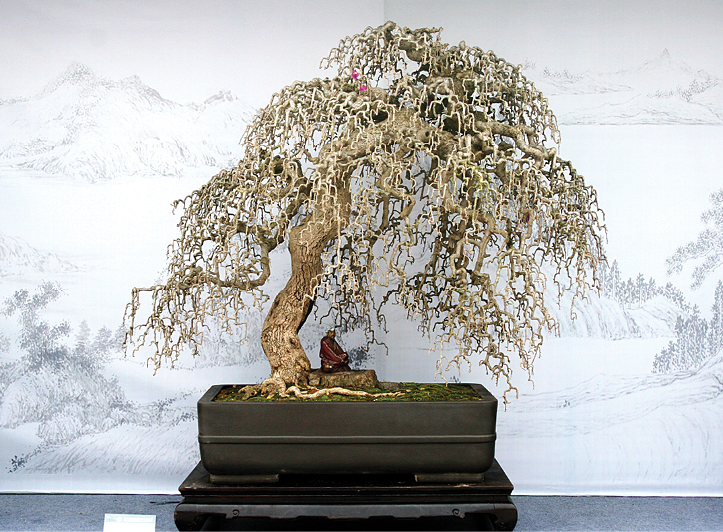 Use the Menu on the bottom for Articles on Bonsai by BCI members and Bonsai Galleries from major exhibitions and events.
Use the Menu on the bottom for Articles on Bonsai by BCI members and Bonsai Galleries from major exhibitions and events.
Check back often as we add more content.
Do you have something to contribute to this section? Let us know.

